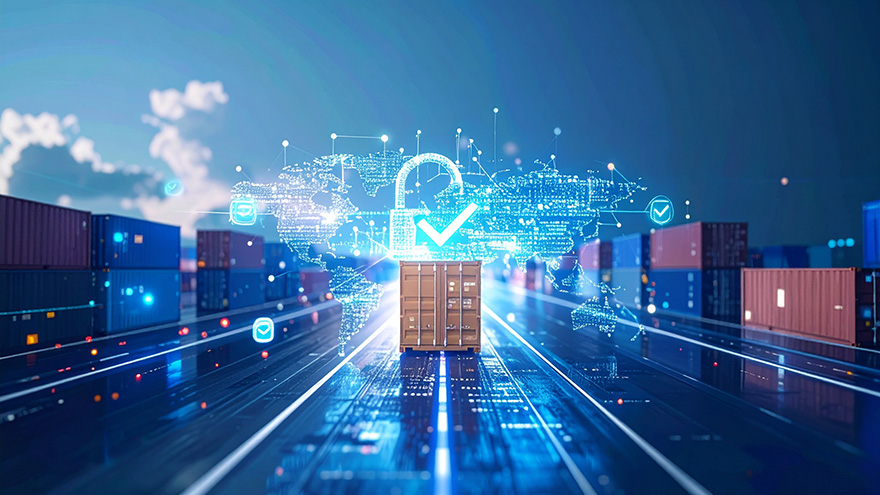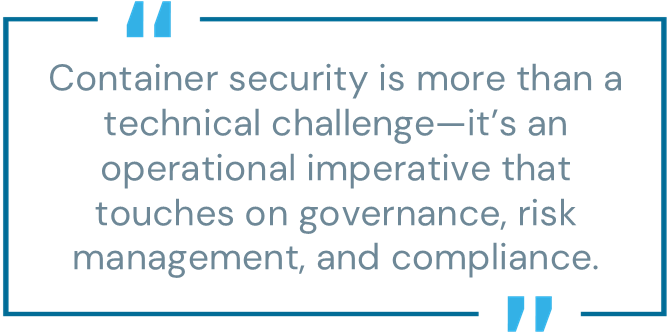
Modern applications have undergone a paradigm shift, with containers becoming the default choice for deployment. While their flexibility and scalability are well-recognized, their adoption has also surfaced new and complex security challenges. Organizations are now grappling with how to embed trust across their software supply chains, maintain compliance, and mitigate risks—especially as they increasingly incorporate open-source components and AI-generated code into their workflows.
This blog explores the broader trends shaping container security, the importance of code signing, and how these advancements are steering the industry toward more resilient software supply chains.
Understanding the complexity behind container security
Containers have revolutionized application development by enabling consistent, microservices-based architectures across diverse environments. However, the trade-off for flexibility is the exponential increase in the complexity of managing these environments securely.
Several key trends are amplifying this complexity:
- Development velocity continues to rise: Organizations strive to innovate faster than competitors, leading to shorter development cycles. However, this rapid pace raises the risk of vulnerabilities being introduced and overlooked during development.
- Dependence on open-source components: Open-source libraries and frameworks are integral to many builds but come with risks, including outdated dependencies and unverified code origins. Left unchecked, these vulnerabilities can propagate throughout the software lifecycle.
- Emergence of AI-generated code: AI tools are accelerating development but also creating challenges in verifying the integrity and quality of generated code. If not properly vetted, AI-generated components can introduce new vulnerabilities or propagate existing flaws.
These factors highlight a growing need for systems and processes that address the trustworthiness of individual components and the overall build pipeline.

The high stakes of securing containerized applications
The stakes for containerized application security are unparalleled. Beyond individual incidents of tampered containers or malicious code slipping into production, systemic weaknesses in container security can have cascading, enterprise-wide consequences. Some of the broader issues include:
- Supply chain attacks
High-profile breaches in recent years have demonstrated how malicious actors target software dependencies and distribution mechanisms to infiltrate organizations. Containers, by design, often integrate third-party dependencies, creating significant exposure. - Regulatory compliance pressures
Regulatory bodies are paying closer attention to software supply chain practices. Failure to establish robust security processes can result in financial penalties and reputational damage.
For organizations, secure container practices are no longer optional—they are essential components of operational resilience.
Building trust: Cryptographic signing as a security foundation
One of the most effective solutions gaining traction across industries is the cryptographic signing of container images and artifacts. By digitally signing a container, organizations create a verifiable guarantee of its integrity and origin. Here’s how signing addresses key security needs:
- Preventing tampering. Cryptographic signatures function as a seal of authenticity, making any alteration of signed artifacts post-signing readily detectable.
- Supporting compliance. Signatures provide an audit trail of approvals, enabling organizations to demonstrate compliance with standards and mandates.
- Enhancing trust. Developers, users, and stakeholders can have confidence that what they deploy aligns with established policies and uncompromised sources.
However, signing is most impactful when integrated seamlessly into workflows and policies. Without proper governance, cryptographic signing risks becoming a standalone, ineffective process.
How the industry is tackling software supply chain risks
The broader industry is aligning around specific strategies to address container security challenges. These include:
1. Embedding trust into CI/CD pipelines
Modern CI/CD systems must do more than streamline development. They now play a pivotal role in ensuring the security and authenticity of what is built. By integrating cryptographic signing into CI/CD workflows, developers can verify builds automatically, helping to support security without disrupting their development pace. Automating key steps within pipelines reduces manual intervention, mitigates human error, and scales signing across teams.
2. Extending security to runtime environments
A gap often exists between building trust during development and enforcing it at runtime. Organizations increasingly implement runtime policies that only allow the deployment of signed, verified artifacts. This approach helps maintain alignment between build-time assurances and operational security.
3. Scaling policy enforcement
Security controls are evolving from rigid, one-size-fits-all measures into dynamic policies tailored to each environment. Organizations are adopting fine-grained policy management tools that define conditions under which containers can move between stages of the software delivery lifecycle. These policies can help support alignment between security and business goals while maintaining rigorous oversight.
4. Adopting open standards for verification
The industry is leaning toward open frameworks and standards designed for interoperability, such as using open-source tools to verify cryptographic signatures. These systems simplify collaboration across organizations and improve transparency, which is crucial for modern supply chains with multiple contributors and partners.
What’s next for container security
The convergence of containerized environments, open-source dependencies, and AI-driven code represents both an opportunity and a risk. Organizations that fail to implement robust security measures across their software supply chains risk falling victim to increasingly sophisticated threats.
The future direction of container security likely includes greater adoption of advanced automation, real-time vulnerability detection, and proactive incident response capabilities. Additionally, security-by-design principles will increasingly influence infrastructure and organizational cultures, enhancing resilience at every stage of the software lifecycle.
Trust-driven strategies for supply chain security
Container security is more than a technical challenge—it’s an operational imperative that touches on governance, risk management, and compliance. Organizations should view securing their software supply chains as an investment in their resilience and ability to innovate confidently.
By prioritizing systems such as cryptographic signing, automating security processes, and enforcing policies at every phase, organizations can work toward establishing a foundation of trust that stands up to the demands of modern development. Stay ahead of the curve by assessing your current practices and identifying gaps that could compromise your supply chain’s integrity.
Florin Lazurca is a director of product marketing at CyberArk.























